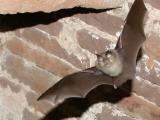Dromedary camels in widely separated parts of Africa were exposed to the Middle East respiratory syndrome coronavirus (MERS-CoV) or a closely related virus well before the first human case was detected, researchers from the Netherlands and Africa reported yesterday.
The discovery of MERS-CoV–like antibodies in camels in Nigeria, Tunisia, and Ethiopia expands the geographic range of the virus beyond the Middle East and raises the possibility of unrecognized human cases in Africa, according to the findings, published in an early online report from Emerging Infectious Diseases.
Also today, researchers reported that a MERS-CoV virus collected from a camel in Qatar was able to infect and grow in human cells in a laboratory culture, adding further support for the view that camels are a source of human MERS-CoV infections. The information was in a report that Qatari officials filed with the World Organization for Animal Health (OIE).
The World Health Organization said last month that MERS-CoV very likely is spreading to humans from camels, but the exact transmission pathway remains unclear.
Testing of African camels
In the study of African camels, researchers tested for MERS-CoV–like antibodies in serum samples that had been collected from 2009 to 2011 during the work-up of other infectious diseases in camel herds in Tunisia, Nigeria, and Ethiopia.
The camels from Nigeria were in herds raised for meat in four different provinces, Tunisian camels were meat or tourist-attraction animals from three provinces, and Ethiopian dromedaries were from three different provinces. The researchers looked at 750 samples from camels ages 1 to 16 years.
MERS-CoV–like antibodies were extremely common in camels from Nigeria and Ethiopia—found in 94% of adult camels from Nigeria and 93% and 97% of juvenile and adult animals, respectively, from Ethiopia. In Tunisia, the prevalence varied and was higher in adult camels than young ones, while tests showed seropositivity in 100% of one herd in the southern part of the country.
From their own new findings and other recent studies, the authors concluded that MERS-CoV or a similar virus circulated in dromedaries in Africa and the Arabian Peninsula well before 2012, when the first human infections surfaced, including in places where no human cases have been detected.
They wrote that retrospective studies of humans with unknown respiratory illnesses should be done to assess if human cases have occurred outside the Arabian Peninsula and add that virus isolation and full genome sequencing will shed light on other possible explanations for a lack of human infections in Africa.
Study of camel MERS-CoV isolate
The OIE report from Qatar deals with a lab study of a MERS-CoV isolate from an 8-month-old camel on a farm that was associated with human MERS cases last fall. At the time of the human cases, camels on the farm were tested, and 3 of 14 were found to be infected, according to a report Qatar submitted to the OIE in November.
The new report says that nasal swab sampling revealed that 1 of 26 camels in one barn was infected with MERS-CoV. In experiments at Erasmus Medical Center in the Netherlands, researchers used a sample from the camel to inoculate Vero cells and human hepatoma cells (called Huh-7 cells). After 2 days they found cytopathic changes in both cell cultures.
Further, the researchers found that viral growth in the human cells was blocked if they exposed the virus sample in advance to diluted serum from camels that carried MERS-CoV antibodies.
"These data demonstrate that the MERS-CoV obtained from a dromedary camel is able to replicate in human cells and uses DPP4 as entry receptor, similar as isolates obtained from MERS patients," the report states. DPP4 is a receptor that MERS-CoV uses to enter human cells.
See also:
Apr 21 Emerg Infect Dis study
Apr 22 OIE report from Qatar
Feb 27 CIDRAP News story on MERS-CoV in Egyptian camels


















